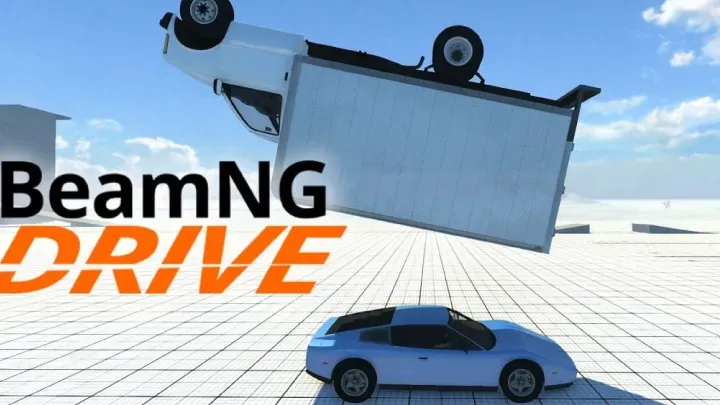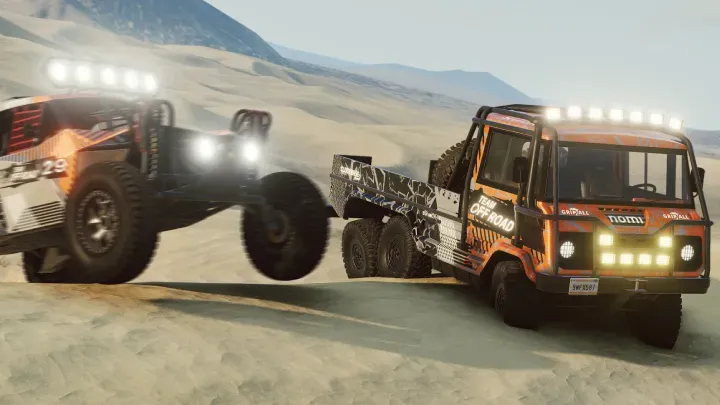BeamNG.drive isn’t just a driving game—it is a technological marvel that redefined how digital physics can be used in gaming. While most racing titles prioritize speed, graphics, or arcade accessibility, BeamNG built its reputation on something far more complex: an advanced soft-body physics engine capable of simulating vehicle damage, deformation, and environmental interaction with remarkable realism. This article takes a deep journey into the physics that power BeamNG.drive, exploring its origins, inner workings, applications, and the lasting impact it has on both players and the gaming industry at large.

The Origins of BeamNG’s Physics Vision
BeamNG’s physics engine was not an afterthought; it was the foundation upon which the entire game was built. The developers were driven by a vision to create not just a driving simulator, but a physics simulator where vehicles behave like real-world machines.
Unlike traditional racing games that rely on pre-baked animations for crashes or rigid models for cars, BeamNG was conceived as a sandbox where every collision, every bend in metal, and every impact with terrain is calculated in real time. This vision required a different approach to physics coding than what had existed in games prior.
The early prototypes of BeamNG were rough but revolutionary. Cars crumpled realistically, suspensions buckled under uneven terrain, and no two crashes looked alike. These small demonstrations convinced both the developers and early fans that they were onto something groundbreaking.
The Concept of Soft-Body Physics
At the heart of BeamNG’s realism is soft-body physics—a system that simulates objects as a network of interconnected nodes and beams rather than solid, rigid bodies.
- Nodes act as points of mass (like corners of a chassis or hinges of a door).
- Beams connect these nodes, simulating metal, plastic, rubber, or other materials.
When forces are applied—whether from acceleration, braking, or impact—the beams stretch, compress, or break, mirroring how real-world materials deform. This allows BeamNG to calculate not just whether a car is damaged, but how it is damaged.
This system is why a high-speed head-on collision in BeamNG doesn’t just trigger an explosion or generic wreck but leaves behind a twisted mess of bent steel, broken axles, and crumpled hoods that look frighteningly authentic.
Vehicle Construction in the Physics Engine
Every vehicle in BeamNG is more than a skin—it is an intricate framework of thousands of nodes and beams that represent its physical makeup.

Developers and modders build vehicles by carefully mapping out:
- Chassis structures with rigid beams for frames.
- Suspension systems with springy connections to mimic shocks and struts.
- Wheels and tires as elastic, deformable components.
- Body panels with varying stiffness to replicate crumple zones.
This level of construction means that every car doesn’t just look different; it behaves differently. A muscle car reacts with brute force and poor handling, while a lightweight rally car flexes and rebounds with agility. Even minor details, like the density of glass or the tensile strength of a bumper, affect how a vehicle interacts with the environment.
Environmental Interaction and Terrain Simulation
BeamNG’s physics aren’t limited to cars—they extend to the environments themselves. Roads, dirt, mud, sand, water, and even vegetation are programmed to respond to vehicles realistically.
- Driving through mud slows a car as wheels dig into deformable surfaces.
- Sand absorbs momentum, making off-road vehicles struggle without proper traction.
- Water flows around vehicles, dragging them off balance if they enter at speed.
These environmental factors ensure that the physics aren’t just cosmetic but functional. A car designed for highway driving may completely fail in mountainous terrain, while off-road trucks dominate rugged landscapes.
This interplay between vehicles and environment elevates BeamNG beyond being a driving simulator—it becomes a full physics sandbox where every surface tells a different story.
Realism in Vehicle Crashes
One of the defining features of BeamNG is its crash realism. Unlike racing games where wrecks are often flashy but repetitive, BeamNG crashes are unique, unscripted, and deeply tied to the underlying physics.

Every accident is calculated in real time:
- A frontal collision distributes force across the hood, engine bay, and cabin.
- A side impact bends doors, pillars, and suspensions in irregular patterns.
- Rollovers cause roofs to cave in dynamically depending on the angle and speed.
Because the physics simulate real materials, a minor fender-bender might only leave scratches and dents, while a high-speed wreck can leave a vehicle mangled beyond recognition. This unpredictability has made BeamNG famous among crash-test enthusiasts and content creators on platforms like YouTube.
The Role of Weight, Speed, and Force
BeamNG’s physics are not merely aesthetic—they rely on accurate calculations of physics laws such as Newtonian mechanics. Weight distribution, acceleration, and inertia all play critical roles in determining how a vehicle behaves.
For example:
- A heavy truck may crush smaller cars in collisions due to momentum.
- Lightweight cars can spin out more easily when struck from the side.
- Sudden braking at high speeds redistributes weight, causing nose dives and potential rollovers.
This adherence to physics principles ensures that BeamNG feels authentic, even when pushing scenarios to extremes.
The Impact of Physics on Gameplay Design
Because physics drive the game, they also shape how players experience it. BeamNG isn’t about winning races or unlocking cars—it’s about experimenting with the possibilities of simulation.
Players often create their own challenges, such as:
- Crash testing vehicles into walls, barriers, or trains.
- Designing obstacle courses to stress-test suspension systems.
- Simulating real-world accidents for research or curiosity.
This open-ended design makes BeamNG less of a game in the traditional sense and more of a physics playground. Its physics engine enables creativity, encouraging players to interact with the systems however they choose.
BeamNG’s Physics Beyond Entertainment
BeamNG’s physics have applications that reach far beyond gaming. The engine has been studied and used in fields like:
- Automotive safety testing for visualizing crash scenarios.
- Engineering education to teach material deformation and structural integrity.
- Film and animation for creating realistic crash sequences without practical stunts.
This crossover into real-world industries demonstrates how BeamNG’s engine is more than a novelty—it is a powerful simulation tool with practical value.
The Evolution of Physics Through Updates

Since its release, BeamNG has continually refined its physics engine. Updates have introduced more accurate tire models, improved suspension dynamics, and better aerodynamics.
Each improvement builds on the original promise of realism, making the game more immersive with every iteration. Future updates are expected to refine soft-body modeling even further, potentially adding new materials, weather physics, and even human biomechanics.
BeamNG’s commitment to ongoing evolution ensures that its physics engine remains at the cutting edge of simulation technology.
The Future of Soft-Body Physics in Gaming
BeamNG has set a new benchmark for realism in gaming physics, but its influence extends to the future of the industry. Many developers now look to BeamNG as proof that soft-body physics can create entirely new genres of gameplay.
As computing power increases, we may see more games adopting similar technology for vehicles, buildings, or even living creatures. BeamNG’s physics have laid the foundation for a future where digital worlds are no longer scripted, but emergent—driven by the same laws that govern reality.
Conclusion – Why BeamNG’s Physics Matter
BeamNG.drive is more than a sandbox—it’s a demonstration of what gaming physics can achieve when accuracy and creativity collide. Its soft-body engine has changed the way players think about vehicle simulation, turning every crash, every bend of metal, and every skid across terrain into a unique story of cause and effect.
In a world where most driving games rely on spectacle, BeamNG has chosen substance. Its physics don’t just look real—they are real, calculated in ways that mirror the complexities of our physical world. For gamers, engineers, and dreamers alike, BeamNG remains one of the most important milestones in simulation history.

















